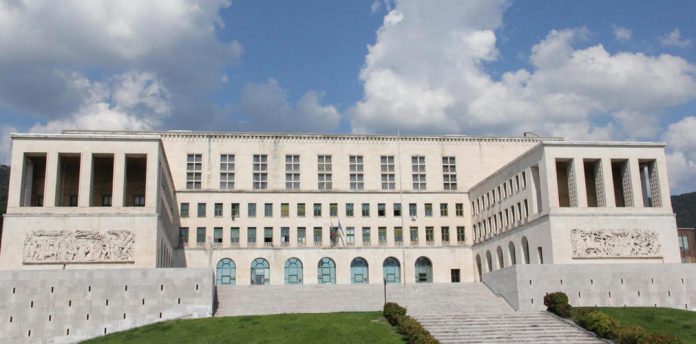by InTrieste
The University of Trieste has inaugurated the Antonio Longinelli Stable Isotope Laboratory, a state-of-the-art facility dedicated to the analysis of stable isotopes and their wide-ranging applications in environmental, geological, and interdisciplinary research.
Located in the basement of Building “O” on the San Giovanni Campus, the lab is part of the Department of Mathematics, Computer Science, and Geosciences (MIGe). It is coordinated by Professor Stefano Covelli, with technician Daniele Karlicek overseeing operations.
At the heart of the new laboratory is a next-generation Isotope Ratio Mass Spectrometer (IRMS), capable of analyzing stable isotopes of hydrogen, carbon, nitrogen, and oxygen in solid, liquid, and gaseous samples. The equipment was acquired through a €4 million special funding initiative launched by the university in 2022 for scientific infrastructure. The project received interdisciplinary support from faculty in the MIGe, Life Sciences (DSV), and Chemical and Pharmaceutical Sciences (DSCF) departments.
Stable isotopes—atoms of the same element differing in neutron number and atomic mass—are powerful tools for investigating a broad spectrum of natural phenomena. In Earth Sciences, for example, oxygen and carbon isotopes are used to reconstruct past temperatures and climate conditions through the analysis of rocks, sediments, and ice cores. Hydrogen and oxygen isotopes are employed to trace the origin and movement of groundwater and surface water, offering insights into hydrological cycles and soil-water interactions.
These analytical techniques are also applied to track pollution sources and study the degradation processes of contaminants. In Environmental Science, carbon and nitrogen isotope analysis provides a better understanding of ecosystem dynamics, nutrient sources, and plant growth mechanisms. In archaeology, isotope studies on human and animal remains can reveal ancient diets, migration patterns, and cultural contexts.
The applications extend even further into fields such as food authenticity, where isotope analysis can help determine the provenance and quality of agricultural and food products.
The laboratory is named in honor of the late Professor Antonio Longinelli, a pioneer in isotope geochemistry. His legacy continues through this new facility, which aims to foster innovation, interdisciplinary collaboration, and international research partnerships in one of science’s most versatile analytical domains.





























